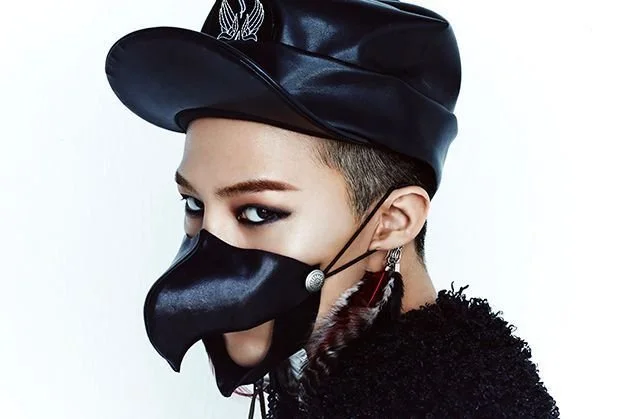Why G-Dragon’s “COUP D’ETAT” Is a Modern Classic
G-Dragon was not the first Korean to attempt to break into the American music industry, but his effort was the boldest. Ten years later, the album is still a force.
YG Entertainment
G-Dragon didn’t care about formalities.
On his second album “COUP D’ETAT” the leader of BIGBANG put his foot on the pedal and launched one of K-Pop’s boldest attempts to break into the North American music industry. The album, released ten years ago this week, is still a force today. Accelerated by the title track produced by Diplo and features from international artists like Baauer, Missy Elliott, Boys Noize, and Sky Ferreira, GD threw away the playbook of how to make a great K-Pop record. This album was largely made for the clubs, for the nights when you’re drunk with friends or the times when you’re just ready to rage. “That’s why the boss [YG Entertainment CEO Yang-hyun-suk] doesn’t like it,” G-Dragon told Complex with a laugh.
“The meaning of ‘Coup D’Etat’ is rebellion, it’s overthrowing a government,” he told GQ Magazine. “Just perceiving the world, I wrote the lyrics with that in mind. I want to continuously instigate, whatever it may be.” GD’s coup attempt wasn’t on K-Pop. He was already a superstar in Korea, leading one of the biggest group’s in K-Pop’s history, and hailing from one of “the big three” record companies. GD’s coup, actually, was on North America.
After all, aside from PSY, a labelmate at YG, no one in K-Pop was widely known in the U.S. at the time of the album’s release. PSY had broken through a year earlier with “Gangnam Style”, a cultural phenomenon that made him a household name – but largely boxed him into a niche. Many had tried before GD, including another soloist from “the big three” named Rain, but with no luck.
G-Dragon, though, seemed like he had a fair shot. One important reason is that he had no male contemporaries in American pop music who could compare to him: His style gave him a stunning canvas to experiment with, and his reedy, thin voice could be almost alarming the first time you heard it. Perhaps the only American contemporary who could even slightly compare to G-Dragon was Lady Gaga, who was in the middle of a highly controversial album campaign called “ARTPOP”. Both pop stars understood that packaging and presentation were the most important factor of their craft. But they were also unafraid to fall apart or to talk about darker concepts.
Many believed that GD had the chops to go farther than any Korean before him, and in a show of support, Complex devoted an entire week to breathless coverage of “COUP D’ETAT”. “G-Dragon is a phenomenon, [who is] bigger than the K-pop scene,” Diplo told the magazine. “He is fearless and punk.”
“CROOKED”, the album’s lead single, best exemplifies just how punk G-Dragon was in the early 2010s. While the album was heavily geared towards hip-hop “CROOKED” captured a frenetic, unpredictable version of the singer. It is the song that I believe has held up best over time, and that is due to GD’s nearly unhinged performance. Teddy, the album’s executive producer, thought that the song best showcased GD’s versatility. “He raps and shit, but he really loves that whole punk attitude,” he explained. “So we needed a track that could express that.”
In the video, G-Dragon thrashes and runs down London streets, a cyclone of destruction and chaos. He rages until he collapses, and then comes back for more. GD looks more like a drunken delinquent than a K-Pop idol, and that was largely the goal.
Time has allowed “BLACK” the chance to grow and shift. On the American release, “BLACK” features Sky Ferriera, an alt-pop singer who was reaching underground success with her EP “Ghost”. In 2013, their pairing made sense as they were both pop outliers. But perhaps the version most K-Pop fans will remember features Jennie Kim, who was still three years shy of her debut in BLACKPINK.
“BLACK” sat on Teddy’s computer for two years before it landed on the album. It was a song that Teddy wanted to keep for himself until G-Dragon heard it and asked to try recording it. Quickly after he listened to the track, GD wrote a second verse to continue Teddy’s story. Teddy was impressed, and a little surprised, that GD was able to make the song his own. “I thought it was going to be hard for him to write the second verse and stay on topic,” Teddy explained, “since the record’s so vague and personal. But surprisingly he nailed it.”
Two days after G-Dragon recorded his verse, Teddy had Jennie in the recording studio. He knew little about her, other than YG “had recommended that she’d be perfect on the song”. This collaboration would begin a long-standing partnership between Jennie and Teddy, though. Today he is BLACKPINK’s executive producer.
A highlight of the album is “Crayon”, a dizzying pop track that combines hip-hop and EDM into unabashed chaos. “Come on, come on,” GD shouts in a chorus that is both stupid and funny, “Get your crayon!” But G-Dragon was well aware that this kind of track sounds absurd. That was all part of his brand.
On “NILRIA”, GD joined forces with Missy Elliot, who was attempting to restage a comeback, and found his match. The song samples a Korean folk song before Missy barrels into the track, and here, their voices almost intertwine into one. Both are jittery, playful rappers who have a knack for theater. There would be no G-Dragon without the boldness of Missy’s weirdest tracks like “I Can’t Stand the Rain”. Long before G-Dragon was championing androgynous looks and weird ass lyrics, Missy was wearing a trash bag and opulent gold sunglasses making it art.
YG Entertainment
Early in his career, GD broke an unspoken rule in K-Pop: He spoke his mind. He scoffed at being compared to idol groups who he claimed (sometimes wrongly) didn’t write their own music, which occasionally landed him in backlash from the artists he criticized. But G-Dragon’s intention was to prove that he was not a company puppet. “At the time of our debut, we were the only ‘idol group’ who produced and wrote our own music,” he said in defense in the Complex interview. “It wasn’t like someone gave us songs and told us exactly what to do.”
“COUP D’ETAT” is by all means a modern classic. It ushered in a new era of seeing and listening to K-Pop. G-Dragon was never going to be an easy artist to consume. His music was often rawer and angrier than anyone recording in K-Pop. Yet it was always honest.
Despite what a concerted effort GD made to appeal to American audiences, he also made missteps. When he posted a photo of himself on Instagram covered in black face paint, he caused a storm of criticism. A representative for the artist said that it wasn’t meant to be blackface, and came from a photoshoot where GD wore a number of different color face paints. However the mistake showed that G-Dragon – and the K-Pop industry – had more to learn about American culture.
K-Pop would continue to retool and shapeshift. When BTS finally landed in America, they cited BIGBANG as chief inspirations for their music. GD’s teammate Taeyang even featured BTS’ Jimin on the lead single “VIBE” for his latest album.
YG Entertainment
But G-Dragon has become an elusive figure. He still posts to Instagram, and continues to attend fashion shows or pose for photo shoots. But he has not released music since his brilliant EP “KWON JI YONG” in 2017.
Yet “COUP D’ETAT” proved that K-Pop can be messy, weird, and daring. A decade after its release, it stands as a seminal album in the genre’s march into American pop culture. Today, K-Pop has reached a peak almost unthinkable at the time of the album’s release. But G-Dragon’s artistry has yet to be duplicated.
“You could be anybody if you want to,” G-Dragon told Complex. “But you can’t be like me.”






